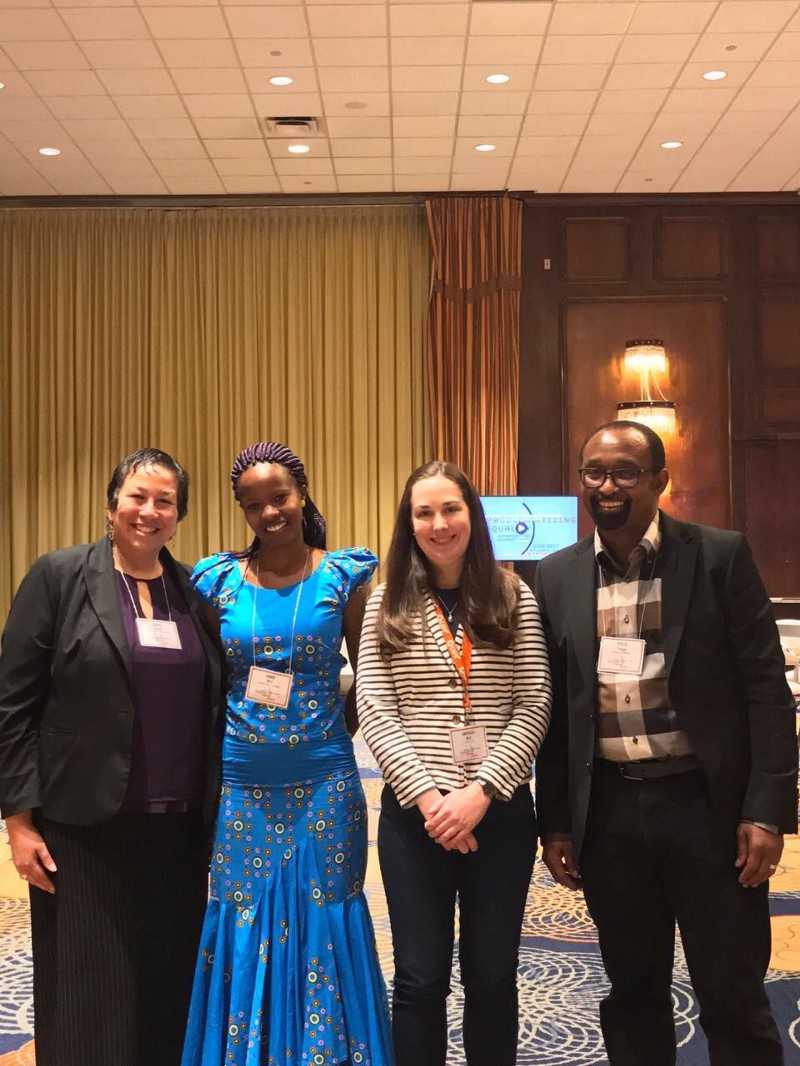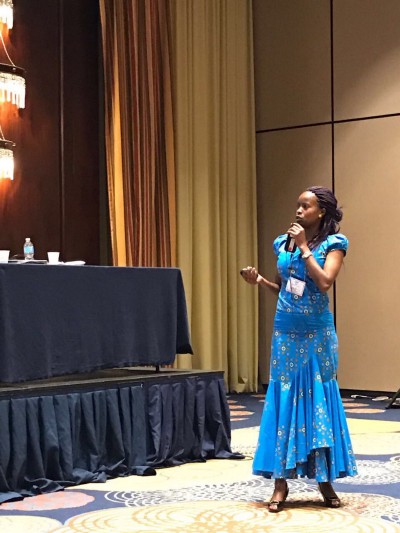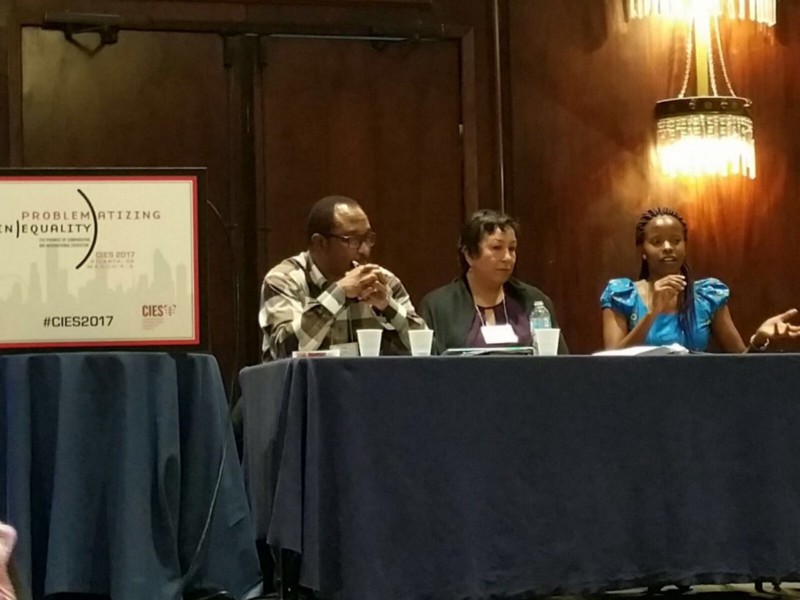In Asante Africa Foundation’s 2nd year of participating in the Comparative and International Education Society (CIES) Summit — which focused on solutions to the problem of inequality in education — the team not only had to talk about organization and program goals, it had to be ready to present concrete results.
What follows is an excerpt from our conversation with Anne Muli (AM), one of the team members that represented our organization from March 5–9 at the annual CIES gathering in Atlanta, Georgia.
Q) Describe the experience of participating at CIES. What does it mean for Asante Africa to be a part of this conference?
AM: The overall experience was great. It was a mind opening conference that led to some big realizations. Being able to do great projects with a high impact on less money is just the tip of the iceberg.
Q) How did we contribute to the conversation around education?
AM: We brought in unique ways of addressing the challenges faced by youths in the communities where we work. The financial literacy/saving inclusion in our program is a key element and a skill they walk away with even after they leave school. Though the challenge still remains: all stakeholders (local leaders, students, parents) need to be better involved, for us to achieve great results.
Q) What made our programs/approach different from others?
AM: For the Girls’ Advancement Program, having the financial literacy piece/saving clubs as one of its components stood out at the conference. As for the Leadership and Entrepreneurship Incubator (LEI) program, Pay it Forward is still a very unique concept. The fact that students design projects out of their own initiatives is great. Parental engagement was also one of the components that all stakeholders were concerned about. The good thing about our programs is that we’re already doing that.
Q) What innovative ideas are coming out of CIES this year? Can you mention the ones that stood out to you the most?
AM: We came back with a lot of ideas, big and small. Worth mentioning ones are:
- There is a need to think about Small Medium Enterprises initiatives. Possibilities of providing seed capital, or partnering with similar organizations and leveraging on their existing materials.
- There is a growing trend on creating partnerships with similar organizations that are doing the same projects.
- Having external evaluations of our programs in place puts us in a better position when it comes to securing funds.
- We have to be mindful about using “timely words” like human centered design vs dream mapping.
Q) Speaking of partnerships, can we expect future collaborations with other organizations we networked with?
AM: YES, we’ve had different organizations interested in our programs, and we are currently reaching out to them to discuss further opportunities.

Q) Any pressing issues revealed that we need to address?
AM: The biggest question we have to ask ourselves about what we do is this: Are our projects driven by the availability of funds or are they needs based? Are they driven by donor requirements or what we know is appropriate for us as an organization?
If for each of these the latter holds true, how do we ensure that the program is sustainable if we don’t get more funds? There is likewise a need to strengthen Monitoring & Evaluation to reflect what our students are doing on the ground.
Q) After listening to other members of the community, do you think our overall vision is in alignment? Are we all working together towards a common vision?
AM: Our vision is clear and all our programs are aligned with the Social Development Goals (SDGs), which happens to be the focus for most organizations.
Q) What were the key takeaways from the panels you were a part of?
AM: Small Medium Enterprises are vital for youth livelihood development program. There is also a need for partnership with organisations that have similar programs. We need to leverage on the existing materials to expand our impact.


Q) What lies ahead for Asante Africa and the community?
AM: It always goes back to strengthening our existing programs to ensure there is continuity. There is great opportunity for Asante Africa if we close the gaps and work on our past failures. Partnerships with other similar organizations, as I’ve mentioned earlier, is key.
Q) What message would you give to our community after this experience?
AM: It’s high time our community thought of how our programs will sustain after the funds run out. Ownership of the community must be engaged to ensure sustainability. This is key and should begin at the initial stages even before the program begins implementation.
Anne Muli is the Leadership and Entrepreneurship program Manager: a program that provides vulnerable youths from deeply rural areas of EA with hands on skills and opportunities for rapidly changing and expanding EA economic landscape. She is also the owner of Boon Investment Enterprises in Kenya, a mobile Banking enterprise.
